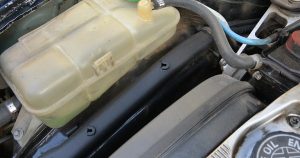 Winterizing your car is akin to protecting your investment. With proper care and maintenance, your vehicle can make it through another winter unscathed.
Winterizing your car is akin to protecting your investment. With proper care and maintenance, your vehicle can make it through another winter unscathed.
Check the Engine Oil
While you most often think about having enough oil, the question to ask as winter approaches is whether you have the correct type of oil. 5W-30 motor oil has a lower viscosity than 20W-50 motor oil and will flow more freely in cold weather. If you’ve been using 20W-50 motor oil throughout the rest of the year, it’s time to make a change. If the engine oil is too thick, it will make it difficult for the engine to turn over in cold weather.
The good news is that 5W-30 oil is recommended for year-round use in most vehicles, so there’s no need to alternate between the two once you’ve made the switch to the lower viscosity variety.
Be cautious about choosing anything with a viscosity that’s lower than recommended in the owner’s manual for your vehicle, though. Oil that runs too thin may not provide sufficient lubrication and protection for your car’s engine.
Change the Oil Filter
The motor oil is not the only factor that weighs heavily on winter performance. Having the correct type of oil filter in the winter is crucial. Lower temperatures mean thicker motor oil, and thicker motor oil means greater pressure on the oil filter, especially at start up. If a filter is not high-quality, it may not be able to sustain the large increases in pressure that occur in the winter and fail at the weakest spot.
Filters with too fine of a filtering screen do not allow oil to pass through as easily as it should in cold weather, resulting in limited lubrication. Check the owner’s manual that came with your vehicle or speak with a qualified mechanic to determine the best type of filter for your make and model.
Consider the Age of Your Battery
Most car batteries don’t last much longer than two to five years, depending on use and the model. Cold temperatures can affect battery performance. If your battery is nearing the four-year or five-year mark, it might be wise to replace it now. Always inspect the battery cables, hold-down brackets, and trays. Signs of erosion could spell a dead battery in the near future.
Inspect the Timing Belt
A broken timing belt presents a greater challenge in the winter, when being stranded does not just mean a minor inconvenience, but a potentially life-threatening situation in some parts of the United States. Cold weather can cause timing belts to stretch and wear sooner than expected due to the expansion and contraction caused by extreme temperatures. Inspect the timing belt on your vehicle and replace it if it’s nearing the manufacturer recommended interval or showing signs of wear.
These are just a few of the components you can check when getting your vehicle in top shape for winter. With careful maintenance and the help of an experienced mechanic, you’ll be able to keep your vehicle running in sun and snow for years to come.





 Warranties include 10-year/100,000-mile powertrain and 5-year/60,000-mile basic. All warranties and roadside assistance are limited. See retailer for warranty details.
Warranties include 10-year/100,000-mile powertrain and 5-year/60,000-mile basic. All warranties and roadside assistance are limited. See retailer for warranty details.